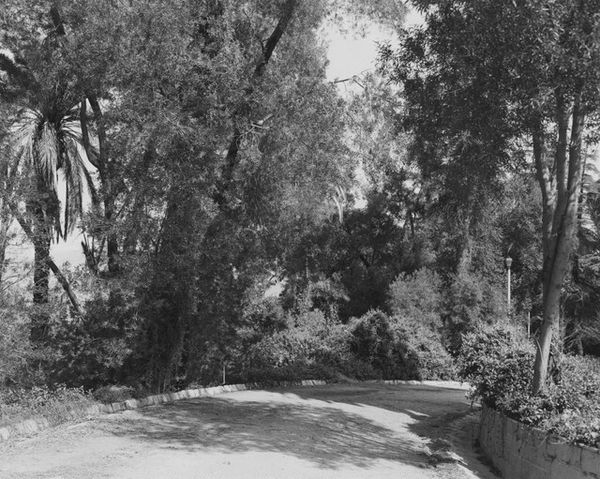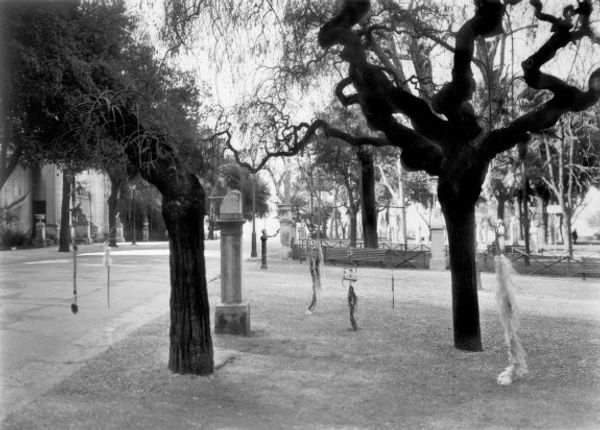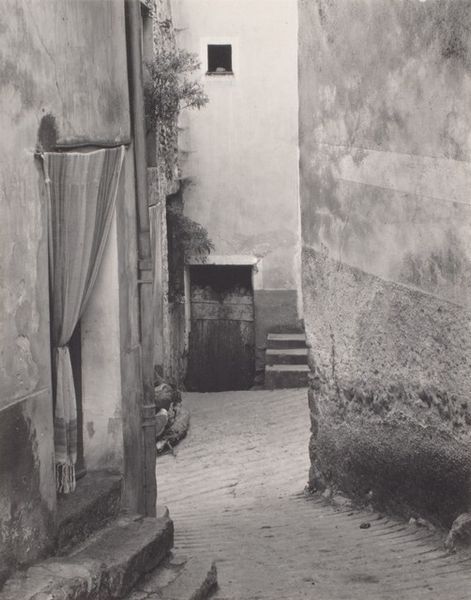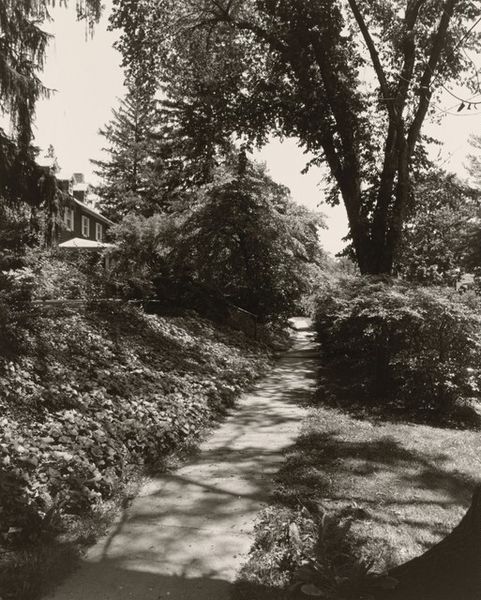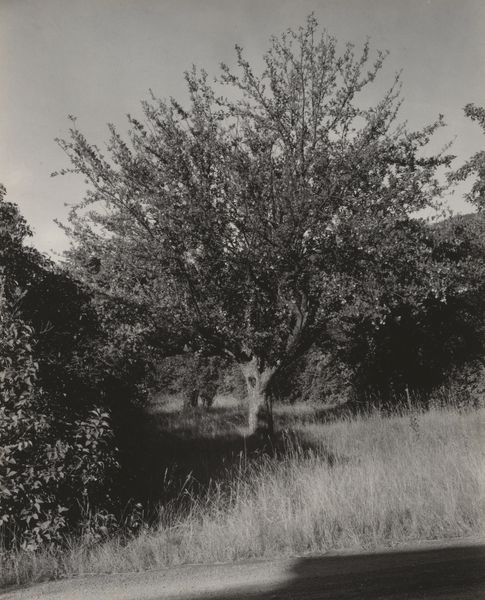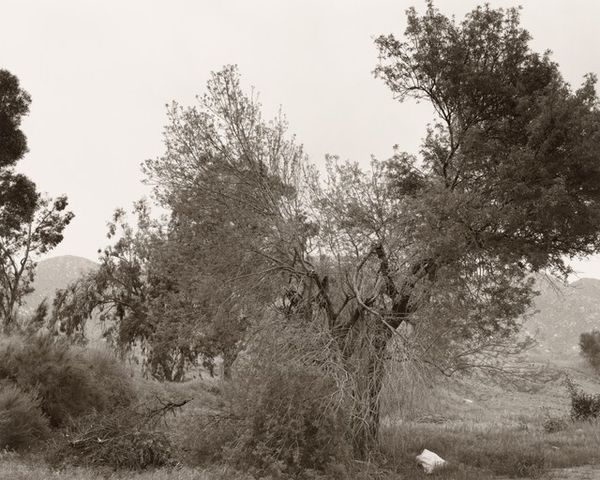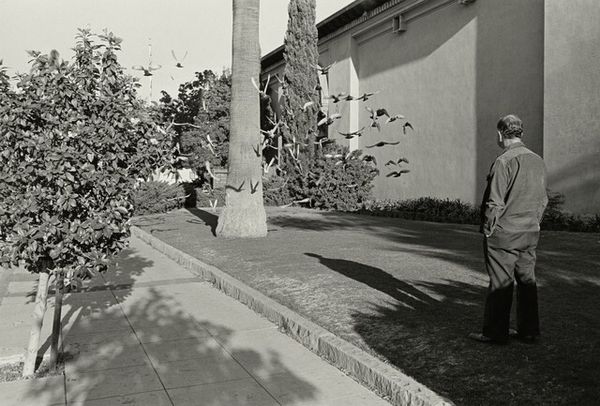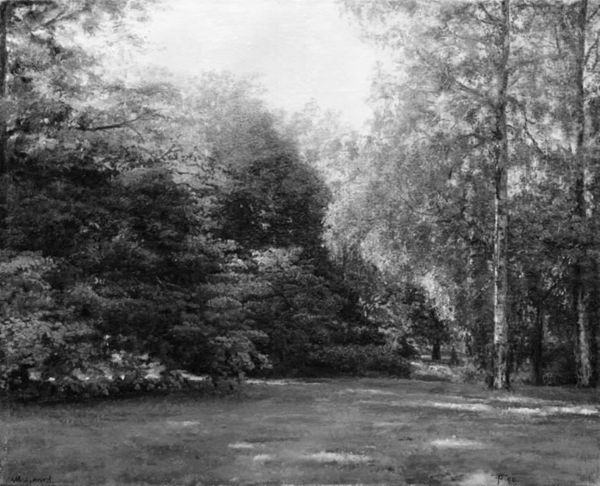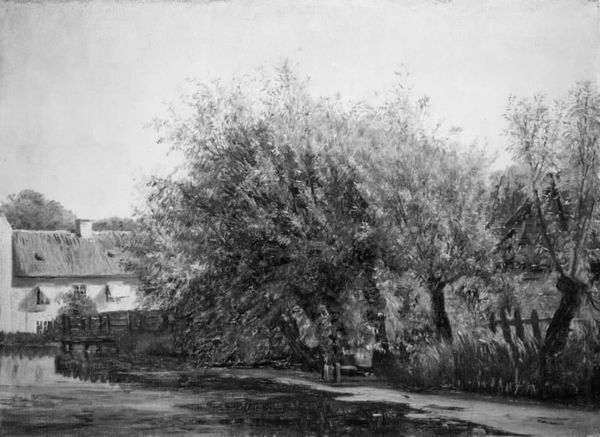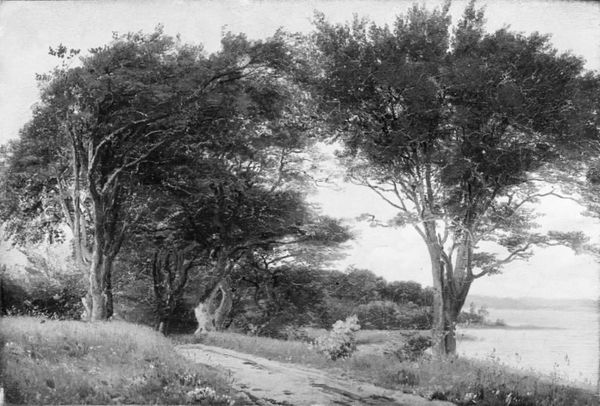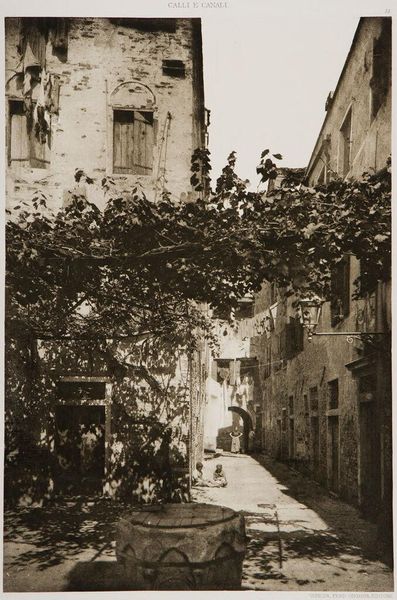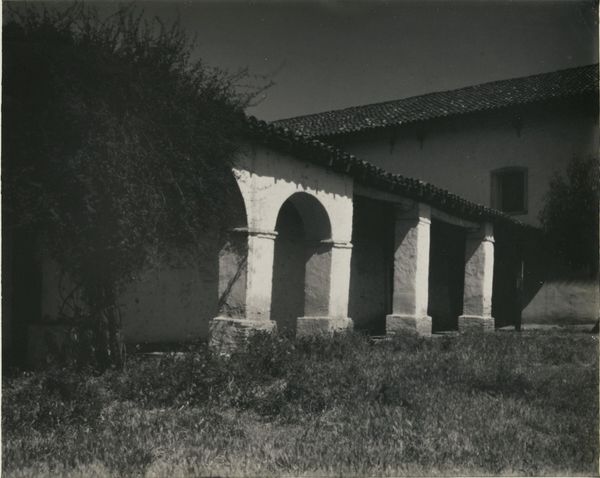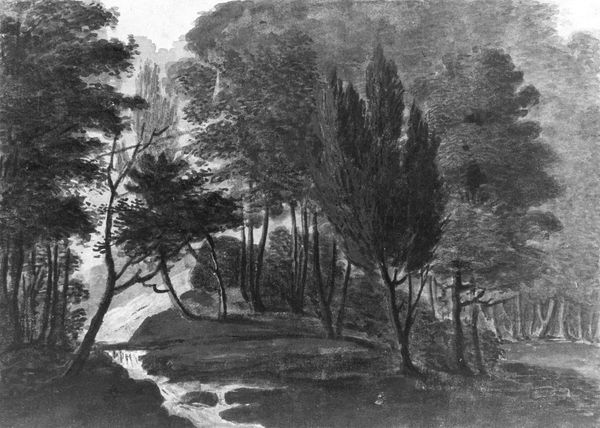
Dimensions: 19 3/8 x 25 3/8 in. (49.2 x 64.5 cm)
Copyright: Public Domain
Editor: This painting is Friedrich August von Kaulbach's "Italian Garden," created in 1894. It seems to be a landscape, possibly done en plein-air, but rendered entirely in monochrome. It strikes me as unusual to see Impressionism presented without its characteristic use of color. What can you tell me about this piece? Curator: I see a fascinating interplay between the Impressionist style and its seeming negation through the limited materials – specifically the monochromatic palette. This forces us to consider the labor involved, the conscious *choice* to represent light and shadow without resorting to color's inherent illusions. Was this perhaps an economic choice for the artist? Pigments were costly. Editor: So, the constraints of the materials influence the artistic direction itself? I hadn't considered that. It feels like more than just an artistic choice; maybe the very act of painting this way reflects the socio-economic conditions influencing artistic production at that time? Curator: Precisely. The means of production, or in this case, the *lack* of certain materials, shapes the art itself. Consider the physical act of painting outdoors, the ‘plein-air’ aspect, but then constrained by these limited pigments. This elevates it from mere depiction to a comment on the possibilities *and limitations* facing artists and their labour. Look at the varying textures created; is it simply an exercise, or does the rough, contrasted style hint at comment on wider culture? Editor: That’s a completely different way of viewing it. I was so focused on the style, that I didn’t think about the materiality influencing the artistic output and interpretation. I guess focusing on the "how" and "why" behind the art brings forth new insights. Curator: Absolutely. Shifting the focus from aesthetic appreciation alone to considering the material and social circumstances transforms our understanding of art, revealing art not just as a reflection of reality but as a product of very real processes.
Comments
No comments
Be the first to comment and join the conversation on the ultimate creative platform.
